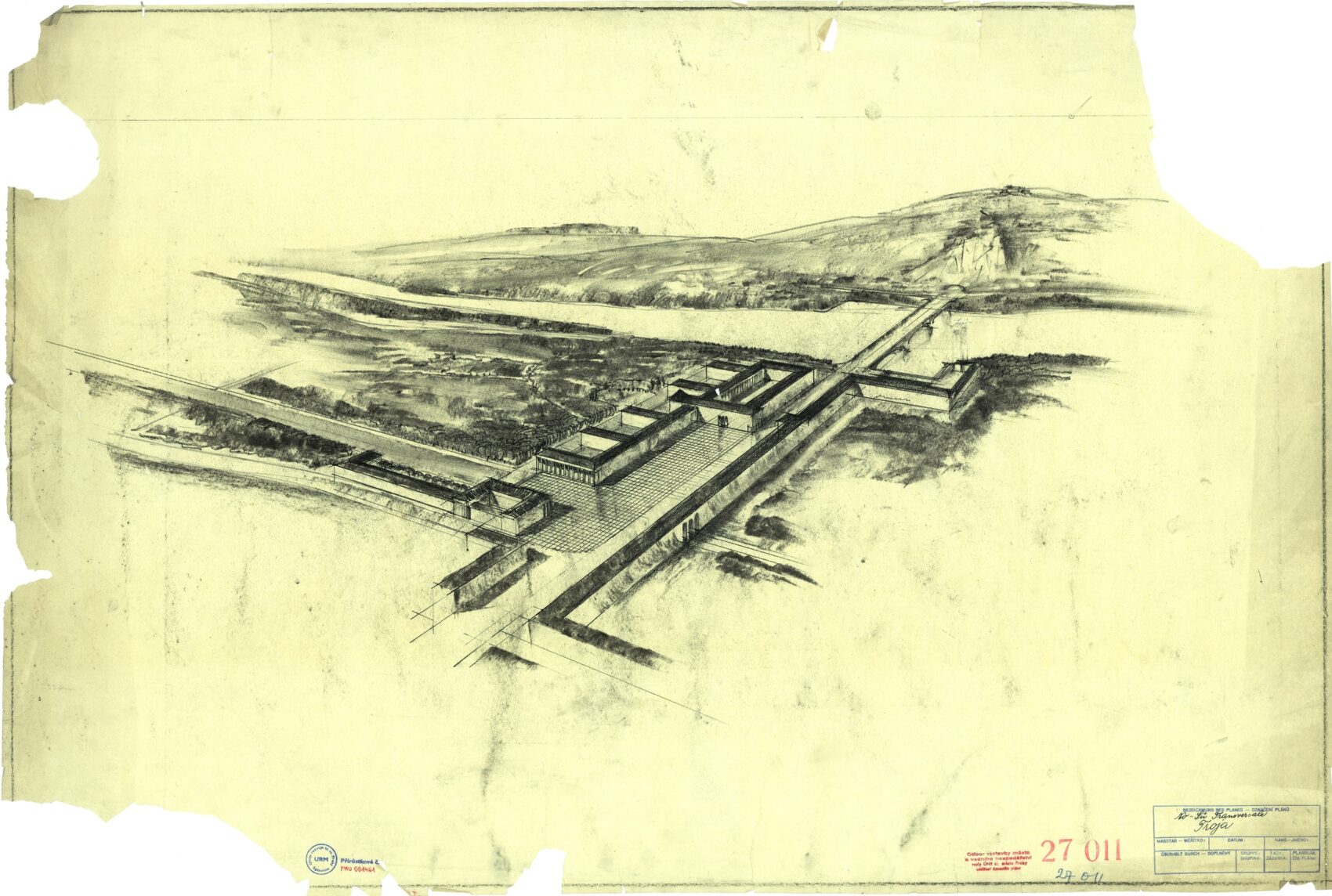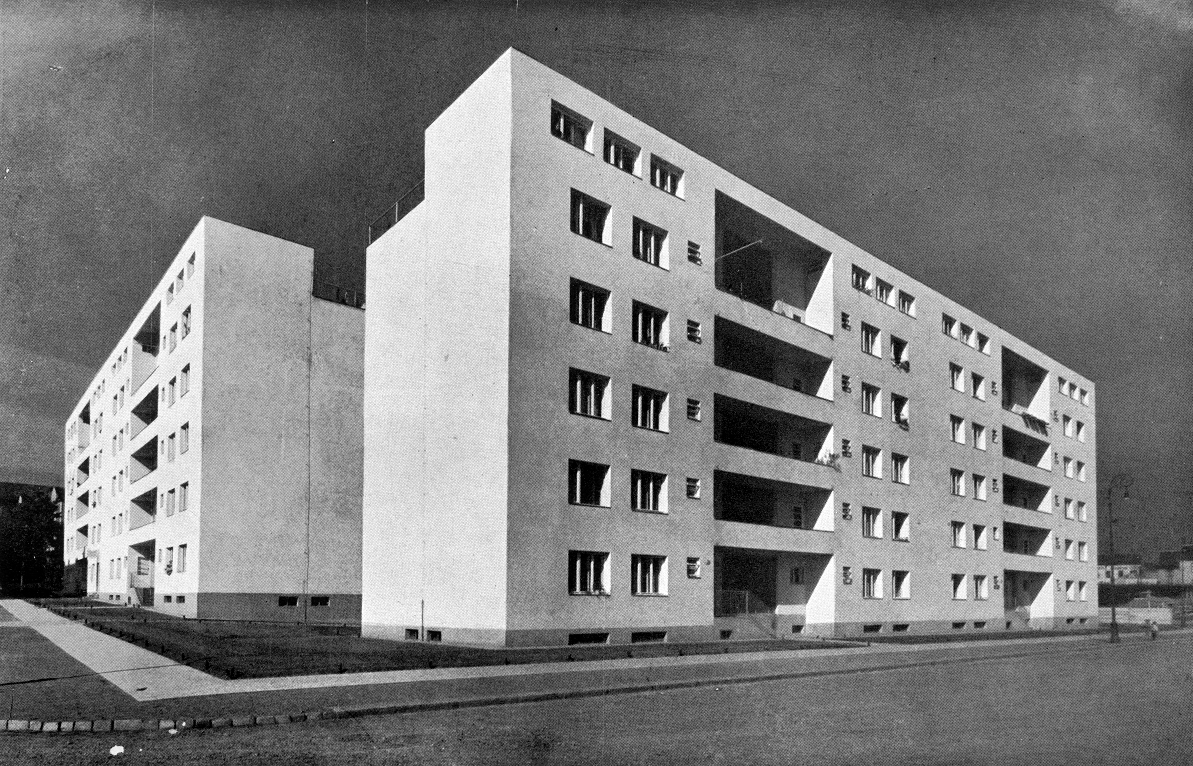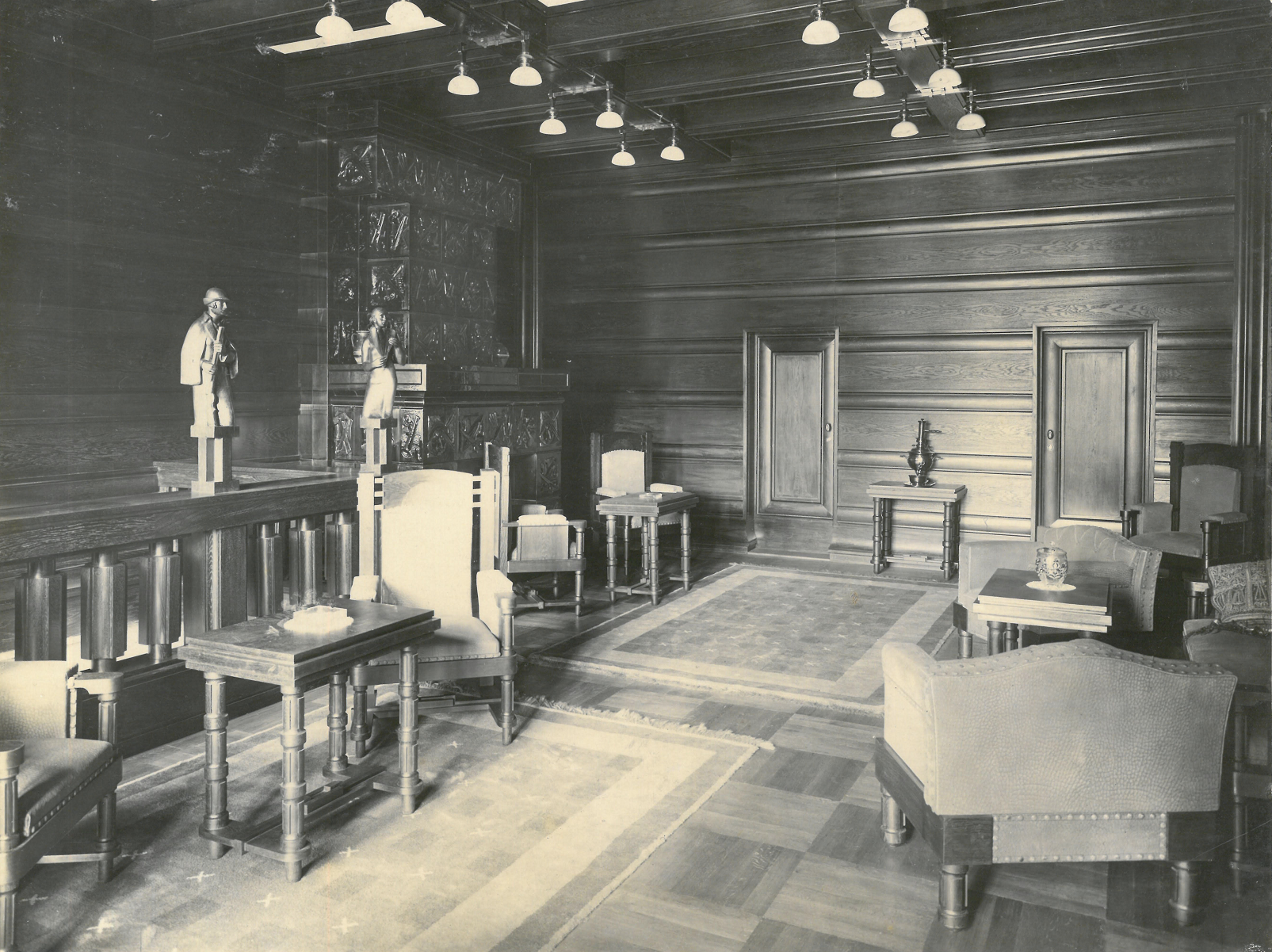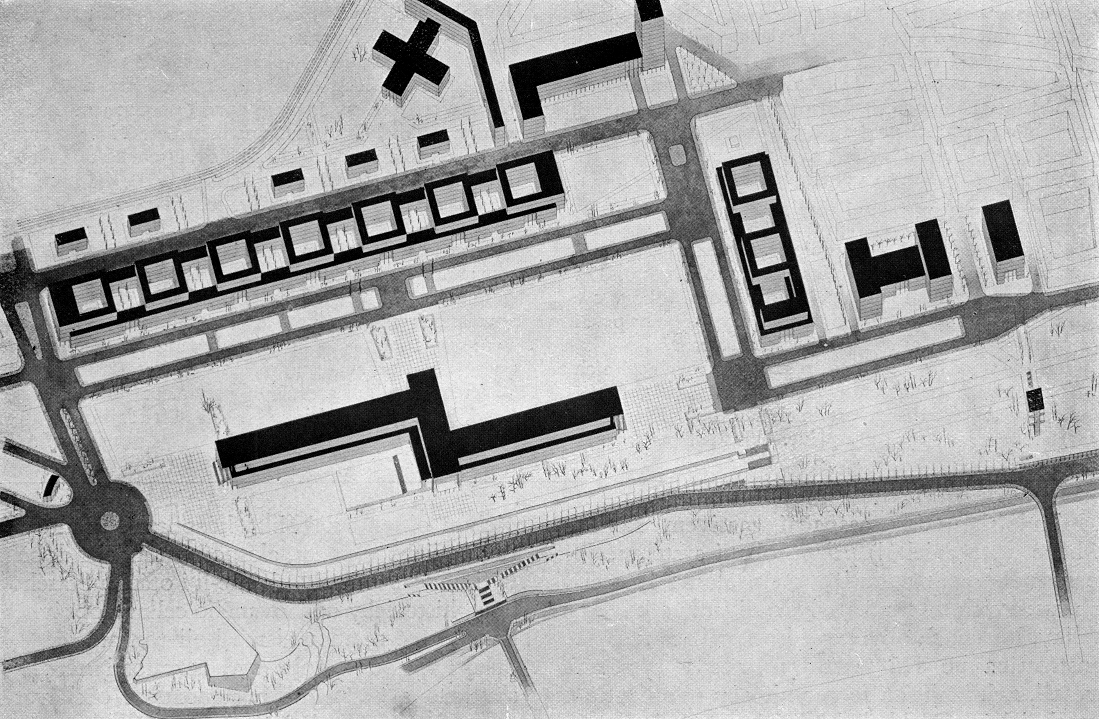
Organized by: Academy of Arts, Architecture, and Design in Prague and Museum of Decorative Arts in Prague
Exhibition concept: Vendula Hnídková
Curators: Dita Dvořáková
Exhibition design: Filip Kosek, Jan Říčný (RCNKSK architekti)
Graphic design: Tereza Hejmová, Kristýna Žáčková
Artistic collaboration: Eliška Perglerová
The exhibition A Spirit at Work: Architecture and Czech Politics 1918–1945 is based on an analysis of the political visions that influenced society in the First Czechoslovak Republic and the Second World War, and looks at how these visions were reflected in the era’s public architecture. Through examples of planned and realized representational buildings for government institutions, embassies, schools, healthcare facilities, and other public agencies, the exhibition explores the search for an architectural vocabulary that might express the values of a democratic state and reflect its economic and cultural successes.
Among other things, this exhibition emphasizes the Pragocentric nature of government administration in the First Republic. It also highlights the energy that interwar Czechoslovakia expended on the creation of new regional capitals in Slovakia and Subcarpathian Ruthenia and on equalizing living standards in the country’s eastern and western halves. Architects and urban planners around the country worked for the national government as well as local and regional authorities to modernize Czechoslovakia’s cities, improve their quality of life, and build new transportation infrastructure. Municipal governments’ modernizing ambitions are documented by looking at the example of the Moravian capital, Brno.
The exhibition also presents a selection of buildings, primarily examples of housing, by which state and local governments sought to achieve social harmony. The Protectorate era, when Czech architects found themselves on the defensive and during much of which there was a ban on new construction, is presented through unrealized proposals for the radical transformation of Prague in the spirit of National Socialist urban planning. The choice of exhibited items has not been guided primarily by questions of a building’s style or aesthetic value, and so the exhibition also includes lesser-known designs (both proposed and realized) that do not entirely reflect art-historical demands for progressive architecture but that nevertheless were a part of the modernizing efforts of the First Republic’s democratic society and the Protectorate’s occupying authorities.
The exhibition is one outcome of the “Architecture and Czech Politics in the 19th–21st Centuries” research project by the Department of Art Theory and History of the Academy of Arts, Architecture, and Design in Prague, which was financially supported by the Ministry of Culture of the Czech Republic as part of the Program for the Applied Research and Experimental Development of National and Cultural Identity (NAKI II, DG1802OVV041).
The House at the Black Madonna
Ovocný trh 19
Praha 1
+420 725 038 628
Opening Hours
Tuesday 10 a.m.–8 p.m.
Wednesday – Sunday 10 a.m.–6 p.m.
Monday closed
Addmission for all branches
full CZK 150 | concession CZK 80



